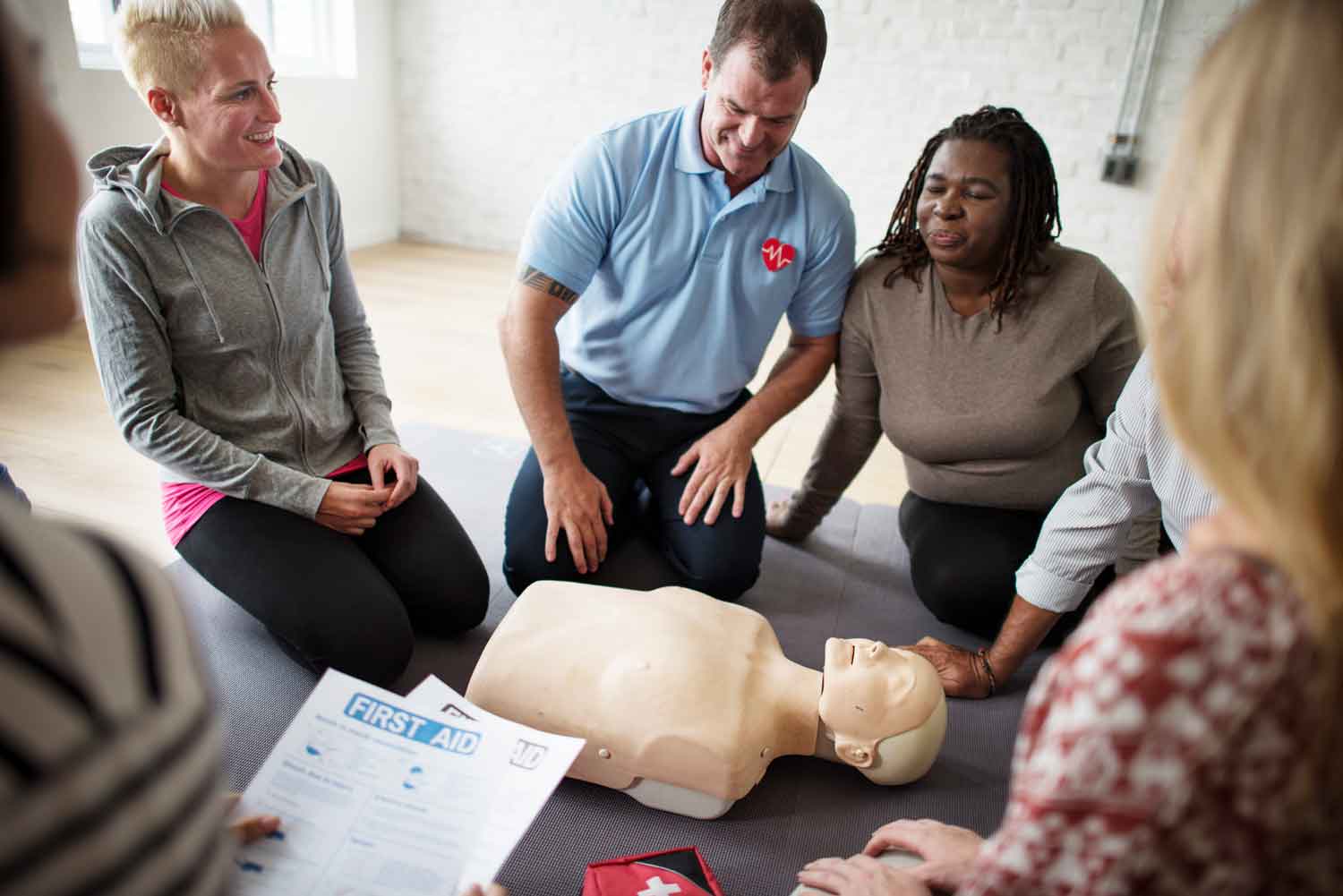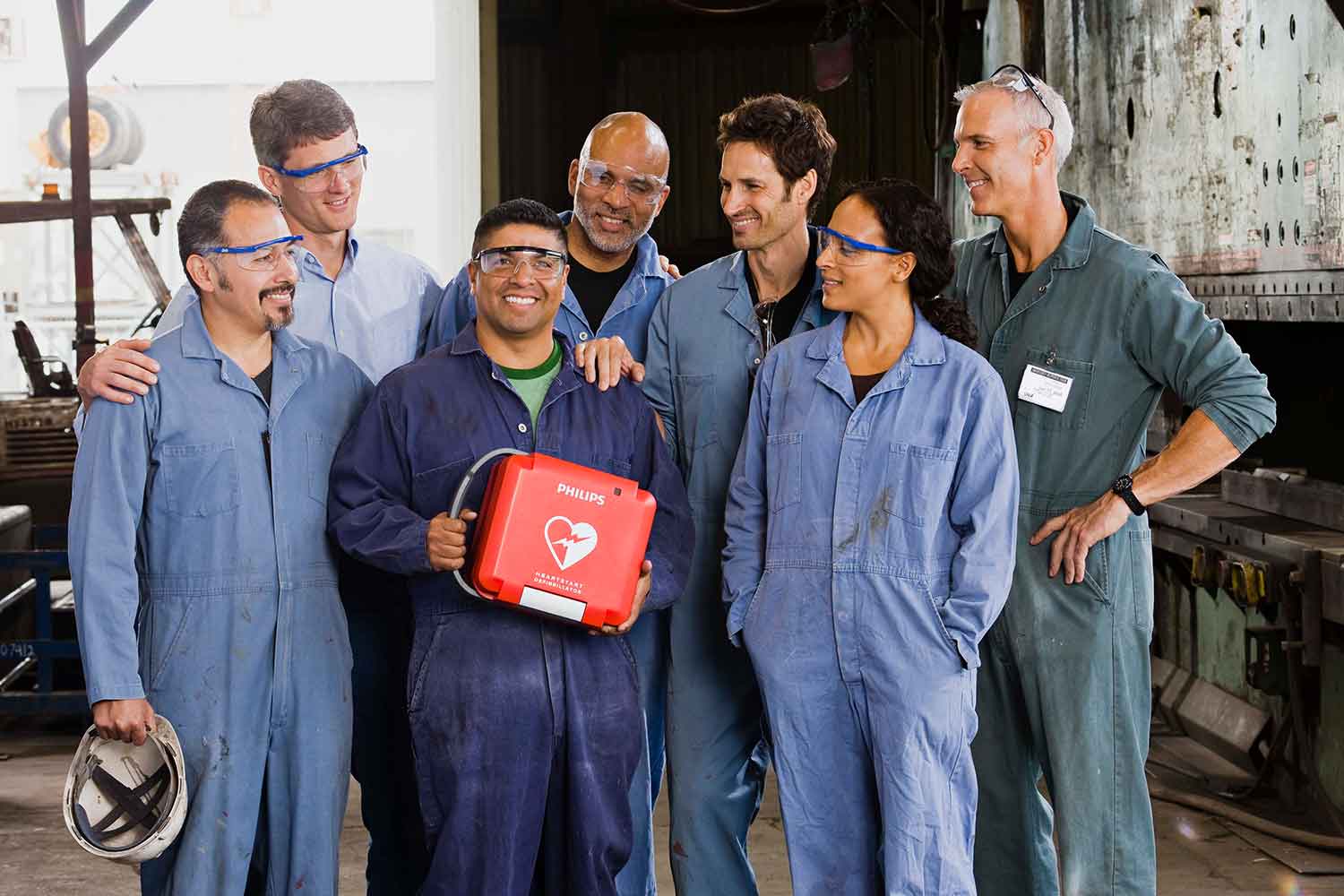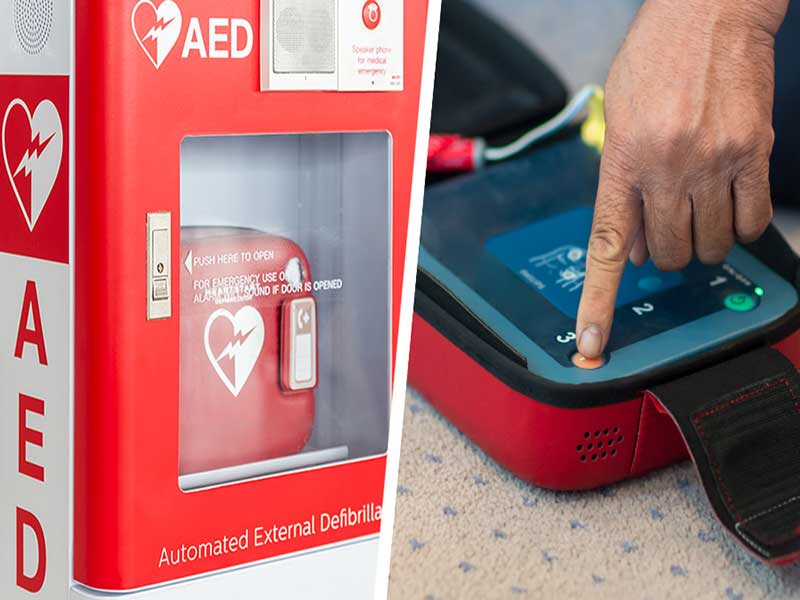CPR training is certainly not required to help a person in cardiac arrest. In fact, attempting CPR even if you are not trained is much preferable to doing nothing. That said, CPR training is a great skill for everyone to learn.
The Benefits of CPR Training
No one ever wants to have to use their CPR training, because no one hopes that something bad is going to happen to someone around them. However, if you happen to witness someone experience cardiac arrest you are going to be grateful to have the background knowledge to help. Your training will kick in and you will have the comfort and confidence to perform CPR properly and use an AED, giving the victim the best shot at survival.
So why should you bother to be trained in CPR? Here are a few good reasons….
- You may be the only person around. There are situations when there is only one witness to a victim experience sudden cardiac arrest or one person who finds someone who has collapsed due to cardiac arrest. There’s a lot of responsibility for that person: call 911, obtain an AED if one is nearby and then set up and use the AED, and start CPR. All of these things need to be done in a situation that will likely be startling and frightening, and they need to be completed quickly. CPR training will help you know what to do when no one else is there to help.
- Even if you’re not the only person around, you may be the only one who knows CPR. Sadly, CPR training is not a particularly common skill. We’ll talk about people who are required to be trained in CPR in a little bit, but did you know that only 3% of people in the U.S. are trained in CPR each year? So even if you witness someone collapse in a large crowd, the chances that someone else is actually trained in CPR is actually pretty low.
- CPR can be the difference between life and death for someone. When a person experiences cardiac arrest, it means that their heart is no longer effectively pumping blood throughout their body. Blood supplies the body’s organs with oxygen, and without that oxygen the organs become damaged. The chest compressions in CPR take over the function of the heart while it’s not beating, but pushing the blood through it. Chest compressions aren’t perfect. They’re not nearly as good at pumping blood through the body as the heart is when it’s pumping normally, but it’s a good substitute that can help preserve the body’s vital organs before treatment, such as an electrical shock with an AED, works and the heart starts beating on its own again. Providing CPR in the first few minutes after cardiac arrest can double or triple the chance of survival.
“I don’t want to hurt someone!”
Hesitation about learning or performing CPR often comes from the fear that you will cause more harm than good. This rationalization may be extrapolated from the idea of not moving someone who has witnessed a traumatic event for fear of causing additional spinal damage that could result in paralysis. However, the two scenarios could not be more different. In the case of trauma, there is a very good reason not to provide care until an emergency responder with the correct knowledge and tools arrives on the scene. In the case of cardiac arrest, time is of the essence and there is very little that a bystander could do to worsen the situation. Attempting chest compressions, even if you are not trained to do so, is far preferable to standing by and doing nothing at all. You should not be afraid to hurt a victim of cardiac arrest, as they are not conscious and cannot feel pain.
Types of CPR Training
There are several different levels of CPR certification, and a couple of different ways to obtain those certifications. Knowing the options will help you pick a method that is most suitable for your situation. Let’s take a look at the options offered by the American Heart Association (AHA), one of the leading providers of CPR training.
CPR Anytime®
The CPR Anytime® kits come in two varieties: adult and infant. This is the most basic form of training available. The kits come with a DVD, manikin, and skills reminder card, and focuses on teaching basic CPR, AED awareness, and choking relief in just 20 minutes. The kits are intended to be shared with family and friends to increase the knowledge and awareness of simple lifesaving skills.
Family & Friends CPR
This course teaches “Hands-Only CPR” for adults, CPR with breaths for children, and CPR for infants, as well as how to relieve choking in adults, children, and infants. These courses are intended for people who do not need formal certification for employment or regulatory requirements, which can include parents and grandparents, babysitters, and even school groups. Courses are taught by an instructor in a classroom setting and allow participants to learn by getting hands-on practice of the skills.
Heartsaver® Courses
Heartsaver® courses are designed for people who do not have a healthcare background and is the type of training that is often taken by people who require some emergency training as a job requirement or as a regulatory requirement (such as to meet Occupational Safety and Health Administration, or OSHA, requirements). There are several different kinds of Heartsaver® courses, and it is possible to combine the CPR AED course with First Aid training. The CPR AED course teaches students to recognize cardiac arrest, provide high-quality CPR, and use an AED before emergency medical responders arrive. Additionally, students are taught how to save a person who is choking. These courses are offered either in-person or blended between online and in-person learning. The in-person courses are completely taught under the direction of an instruction, while the blended option allows students to do 30 minutes to one hour of self-learning followed by a hands-on session where the students can practice skills and be tested by an instructor.
Basic Life Support (BLS)
This course focuses on performing effective high-quality CPR in adults, children, and infants, using an AED, and providing ventilation using a barrier device. There are two ways to obtain AHA ACLS certification: in-person (BLS Instructor-Led Training) or a combination of in-person and online (Heartcode® BLS). The combination in-person/online Heartcode® course is designed for healthcare providers, whereas the BLS Instructor-Led Training is designed more for members of the community who are more likely to be the first on the scene of a medical emergency, such as athletic trainers and coaches, lifeguards, some camp councilors or babysitters, teachers, or flight attendants. The in-person course runs for approximately 4 hours. The online portion of Heartcode® BLS can take 1 to 2 hours followed by the in-person session which can take anywhere from just over an hour to almost 3 hours.
Advanced Cardiac Life Support (ACLS)
This is the most rigorous form of training that is available and is often what is required for physicians, nurses, and other healthcare professionals who work in hospitals as well as for emergency medical technicians (EMTs). In addition to BLS skills it teaches students about reading various heart rhythms, starting an IV line, and using various drugs during cardiac arrest. It also teaches about how to manage a patient’s airway so their lungs can receive oxygen, and how to identify conditions that could have caused the cardiac arrest and need to be treated. When considering obtaining ACLS It is important to look for courses that are certified by the AHA, as this is often a specification made by employers who require ACLS training for their employees. There are two ways to obtain AHA ACLS certification: in-person (ACLS Instructor-Led Training) or a combination of in-person and online (Heartcode® ACLS Blended Learning Training). The in-person method allows for hands-on learning to improve proficiency, active participation, and instructor feedback. This method usually requires 10 to 12 hours of time, including practicing skills and testing. The online method uses eSimulations to go teach through a series of virtual patient cases in a hospital. After passing a written test the students need to attend in-person training. The online portion generally takes approximately 7 hours to complete, and the additional in-person training and testing will take approximately 5 hours.
It should be noted that the AHA is not the only provider of CPR training. The Red Cross is also a large provider of CPR training and offers courses that are comparable to some of the AHA courses.
Who is Required to be Trained in CPR?
Sometimes a form of CPR training is required by law, which often differ from state to state. Other times CPR training is required by employers.
Healthcare Providers
It seems obvious that healthcare providers are likely to be trained in some form of CPR, whether it be BLS or ACLS, but the requirements vary widely. Some professions, like medical doctors, pharmacists, and nurses, generally aren’t required to have CPR training to maintain their license, but it may be a requirement of their employer, especially if they are working in a hospital or clinic. Other healthcare professions, such as dentists and dental hygienists, are required to stay up to date with CPR training in order to get or renew their licenses to practice in some states. Additionally, first responders such as emergency medical technicians (EMTs) will have CPR training, and other first responders such as firefighters and police officers are likely to have CPR training.
Teachers and Students
Depending on the state, CPR training may be a requirement to obtain a teacher’s license. A new trend is to require CPR training in high school, either as part of the curriculum or as a requirement for graduation.
OSHA Requirements
OSHA mandates that employees be trained in CPR in some industries. Examples include:
- Dive team members of commercial diving operations
- Supervisors and employees of logging operations
- Employees working with electric power generation, transmission, and distribution



